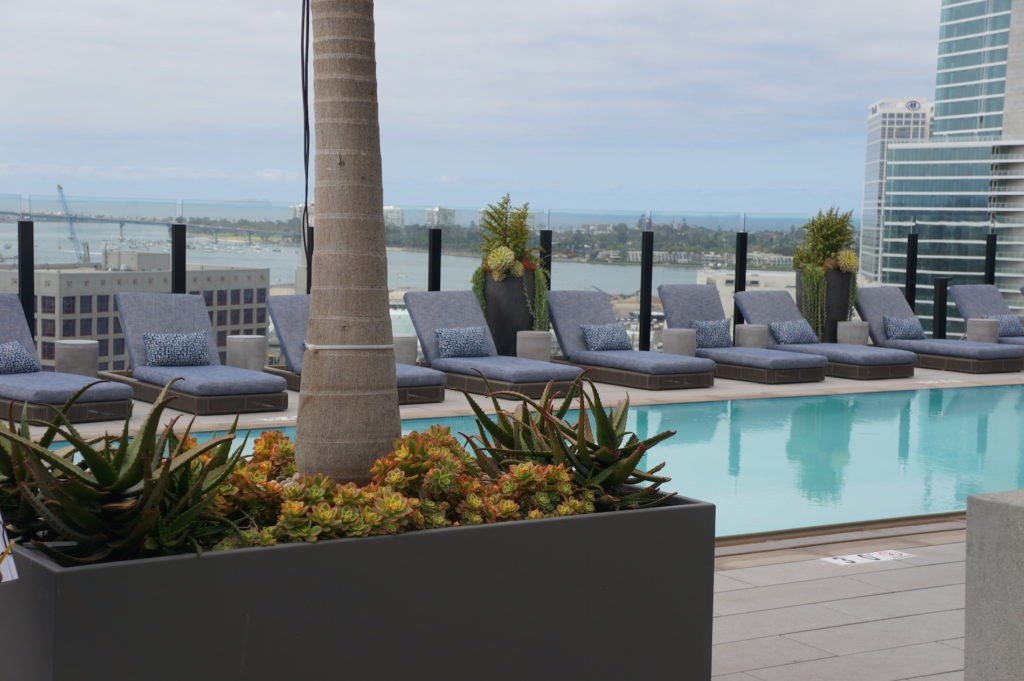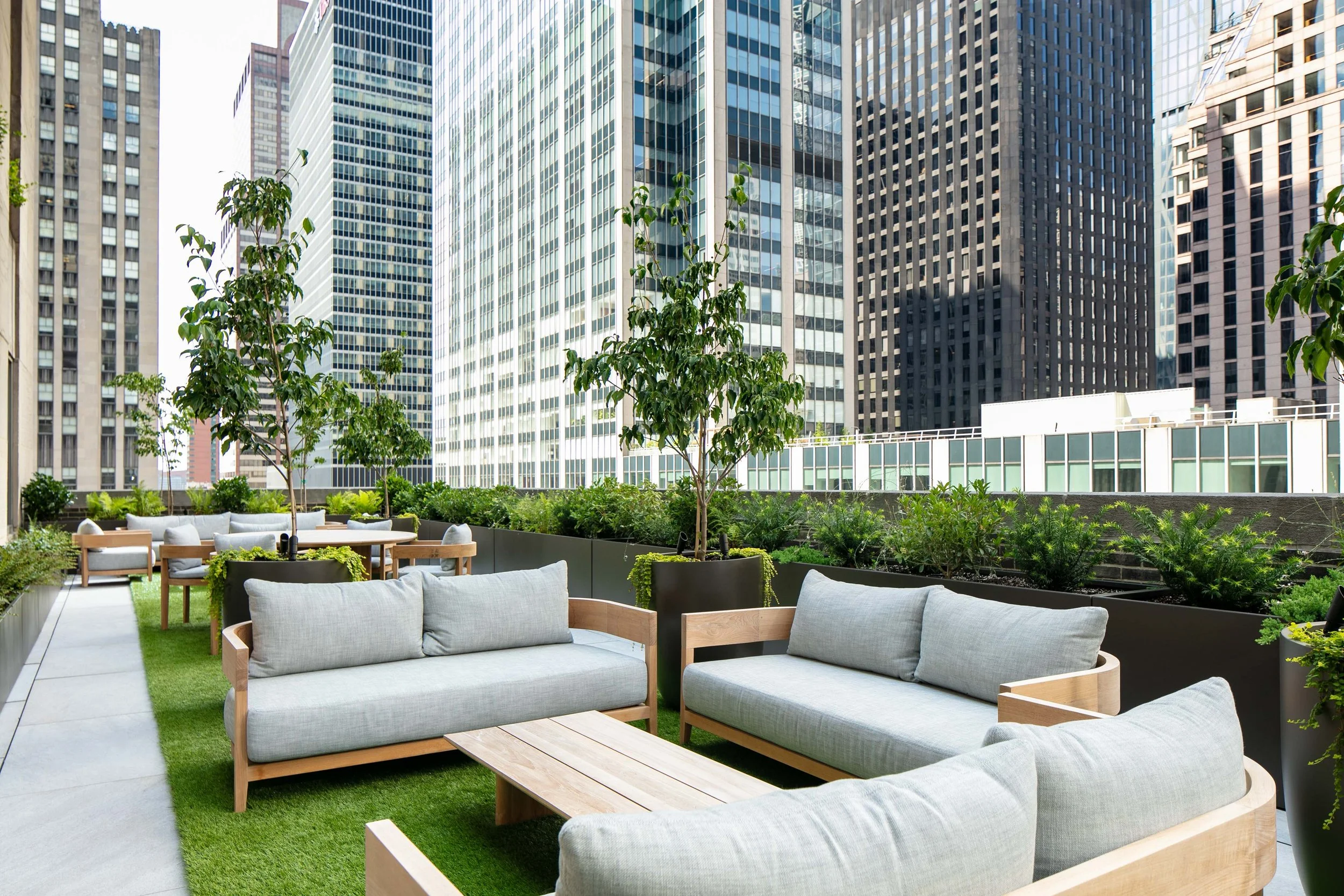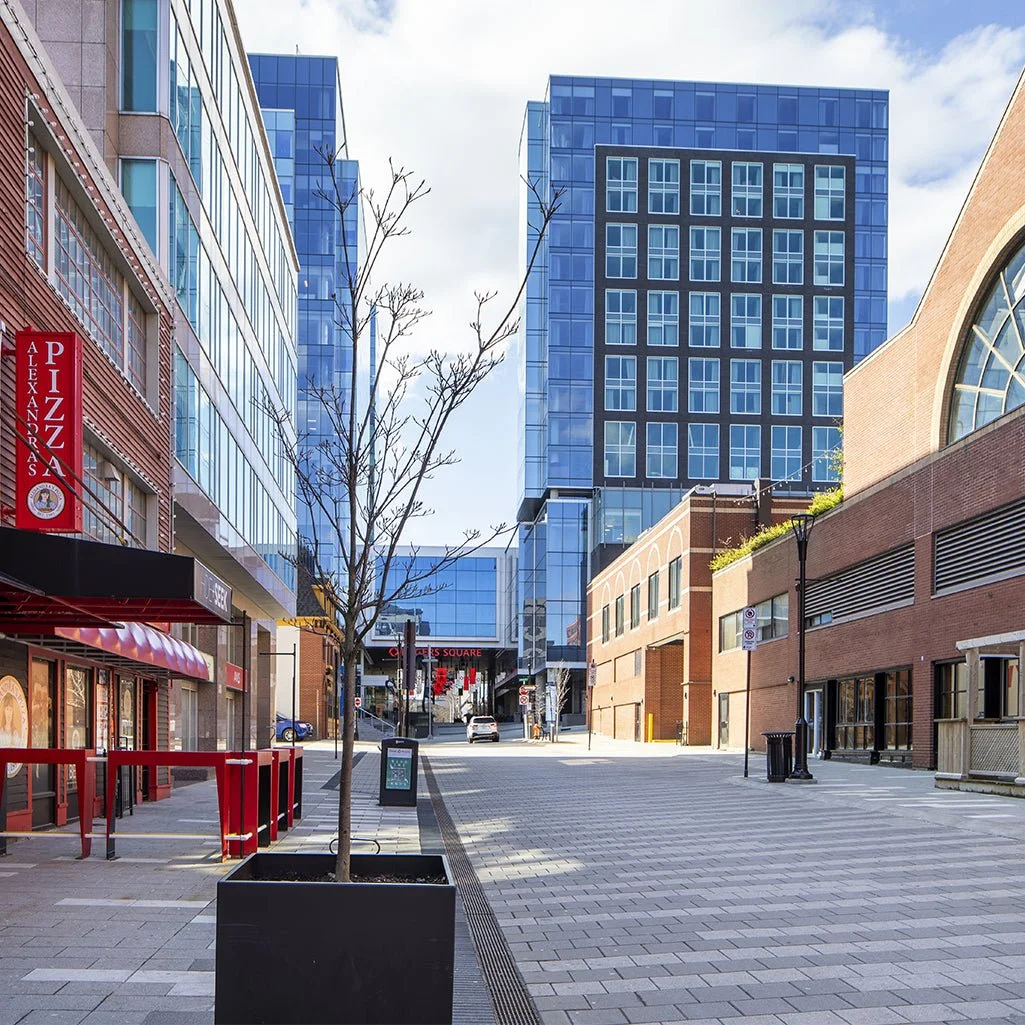What Are the Best Ways to Anchor Planters?
Setting aside time to plan the location of a planter will help determine if the planter will need more than just soil and plants. Strategically locating and even anchoring planters can protect them for years to come. Another important consideration is the contents of the planter.
These and a few additional considerations (see below) will help determine if there is a need to anchor the planter. It’s important to note that not all planters will need anchoring.
Keep reading to determine if and how you should anchor your planters and also for advice about maintaining structural stability over time.
Modern Elite Planter at Alexan ALX in San Diego, CA
Does My Planter Need Anchoring?
Consider these questions as you make your decision:
Is there a risk of a shear wind? This is especially important when designing rooftops and terraces.
Is the planter large enough for the plants you plan to place inside?
Considering how the space is used, is the planter at risk of being tipped over by high winds or being too top-heavy with a large and/or tall tree?
Is there a risk that the planter could be stolen?
Will the planter be resting on a surface that is not level?
If any of these considerations cause concern, anchoring your planter may be the answer. In this article, PureModern shares three ways to get the job done.
3 Ways to Anchor Your Planters to Ensure They Stay Put
1. Add a Heavy Fill Material Inside the Planter
Common sense will tell you that heavier planters are more sturdy and therefore will not move, which is typically true but can also be misleading. Actually, 70% to 90% of the weight can be from the fill material.
So adding crushed stone if they need to be weighted down for stabilization purposes is optimal. You can also weigh down planters with crushed gravel, blue stone, or bricks.
But keep this in mind: When adding a heavy substrate (in addition to soil) to the bottom of the planter, the planter material needs to be able to handle the load. This is where the strength of the planter material becomes incredibly important.
For ease of installation, many of our clients prefer lighter-weight planters. Concrete and steel are heavy-weight planters. Aluminum and fiberglass planters are lighter weight.
5052 Gauge Aluminum Planters have a high strength-to-weight ratio, which means they can withstand loads that would normally be reserved for heavier-weight metals.
If there is concern about a planter toppling and you are adding rocks to the bottom of your planter, be sure the planter can withstand the added load. Some will fail if they were not designed to accommodate the additional load.
Concrete, Steel, and our 5052 Gauge Aluminum Planters would work well in a situation where there is concern for a planter to tip over.
A few side notes:
Be sure you do not exceed the dead loads of the rooftop, floor or decking.
When adding weight to planters, it’s important to carefully calculate depth of soil used, plus the media used to increase the overall weight of the planter. This helps ensure the plant’s root system will have enough space to grow and thrive.
The best way to avoid interfering with the plant’s delicate root system is to add landscape fabric between the soil and the material you are using to weigh down the planter.
2. Properly Position Planters
Planters standing alone in the middle of a patio or balcony are vulnerable to wind from all angles. To prevent planters from tipping, the ideal placement is next to a wall or — even better in a corner.
If such placement doesn’t work for your design plan, then we recommend anchoring the planters.
You can anchor a planter using a counterbalance. We recommend anchoring the planter to a wall or substrate by installing a reinforced band of metal on the planter so the planter retains structural integrity and can be attached to the surrounding wall.
3. Use Custom Anchor Bolt Holes
Planters can be customized to stay put.
Using anchor bolt holes can ensure planter stability if there is a risk of tipping — this is especially important when planters will be situated above those using the space.
The size of the anchor holes should, of course, match the anchoring system of choice. PureModern drills anchor bolt holes for our customers that fit their exact specifications. This way, the planters are ready for on-site installation and provide clients with the piece of mind that they will remain in place
Modular Planters at Rockefeller Center in New York, NY
How to Maintain Your Planter to Prevent Toppling
Whenever plants are added to landscape design, some level of maintenance is necessary. Here are a few simple ways to keep your planter in great shape and prevent them from tipping:
Check soil levels. Over time, soil in any pot will sink. Without enough soil, plants can become loose and be blown over, increasing the chance of a planter toppling. Be sure to check your soil and maintain the proper level from time to time.
Monitor plant overgrowth. Ornamental trees and bushes will grow to whatever capacity they can as long as their roots are happy. So it’s important to keep an eye on how large the plants and trees are becoming and prune as needed. Otherwise, you may need to replace the greenery.
Keep an eye on anchoring bolts. If your planter has been anchored, you will need to periodically check that the anchoring bolts are adequately holding and doing their job.
Modern Elite Cube Planter in Halifax, Nova Scotia, Canada
Learn More
Having a planter fall over on a resident, employee, patron, or client is a disaster every commercial property owner wants to avoid. Even if the planter falls without hitting a person, the planter will likely need to be replaced.
If you decide that you need reinforcements added to your planter — whether a bolt to a wall or anchor bolts in the bottom of a planter — PureModern can create a custom planter solution for you based on your unique needs.
PureModern creates personalized planters to your exact specifications, budget, and timeline. For help with your next planter project, contact us by clicking here.




